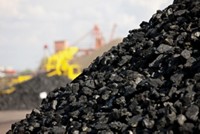Advertisement
Grab your lab coat. Let's get started
Welcome!
Welcome!
Create an account below to get 6 C&EN articles per month, receive newsletters and more - all free.
It seems this is your first time logging in online. Please enter the following information to continue.
As an ACS member you automatically get access to this site. All we need is few more details to create your reading experience.
Not you? Sign in with a different account.
Not you? Sign in with a different account.
ERROR 1
ERROR 1
ERROR 2
ERROR 2
ERROR 2
ERROR 2
ERROR 2
Password and Confirm password must match.
If you have an ACS member number, please enter it here so we can link this account to your membership. (optional)
ERROR 2
ACS values your privacy. By submitting your information, you are gaining access to C&EN and subscribing to our weekly newsletter. We use the information you provide to make your reading experience better, and we will never sell your data to third party members.
Business
Feedstock And Fuel
Natural Gas: Reserves are big, but demand by electric utilities is likely to grow, MIT report says
by Cheryl Hogue
June 28, 2010
A report from the Massachusetts Institute of Technology offers positive news to the chemical industry: The U.S. has an abundant supply of natural gas that can be developed at low cost—equal to 92 years at the current domestic consumption rates. Natural gas is a key feedstock for chemical producers.
But the interim report, which was released on June 25, also comes to a conclusion that the chemical industry may not like: Demands for that resource as a fuel are likely to grow substantially.
If required to reduce greenhouse gas emissions, U.S. electricity producers will increasingly rely on natural gas through mid-century, the report predicts. Electric utilities would replace inefficient coal-fired plants with combined-cycle natural gas facilities, the report says. When burned in a power plant, natural gas produces less carbon dioxide per unit of energy than does coal.
For example, CO2 emissions from power production in a region in Texas could be reduced by as much as 22% with no additional capital investment and without impacting system reliability by favoring natural gas combined-cycle units over coal generation.
Any future expansion of the U.S. chemical production capacity due to the availability of reasonably priced natural gas will likely serve the domestic market rather than boost exports, the report adds. That's because as production has built up offshore over the past two decades, U.S. exports of basic petrochemicals have fallen.
The MIT interdisciplinary team that produced the report studied domestic natural gas reserves and the potential of the fuel to help curb greenhouse gas emissions. Natural gas producers provided part of the funding for the two-year study.



Join the conversation
Contact the reporter
Submit a Letter to the Editor for publication
Engage with us on Twitter